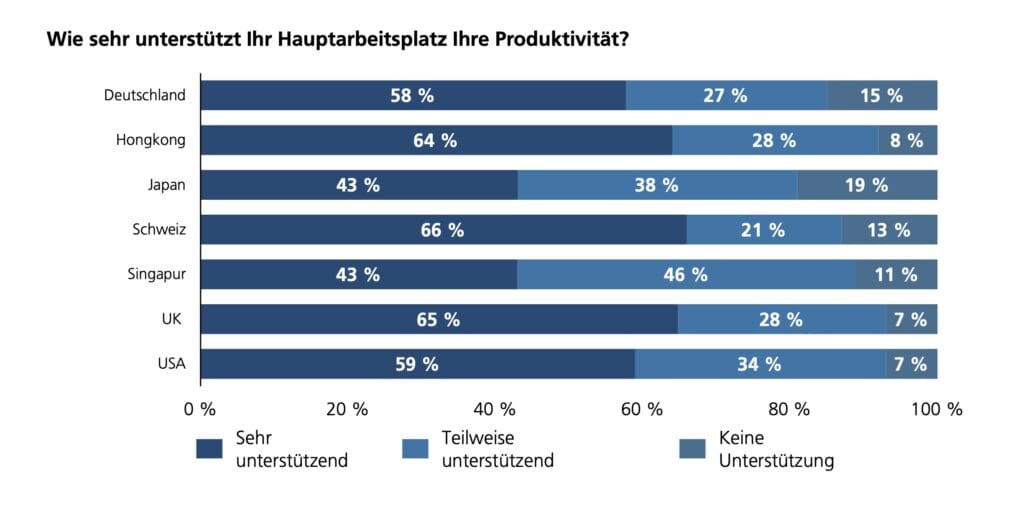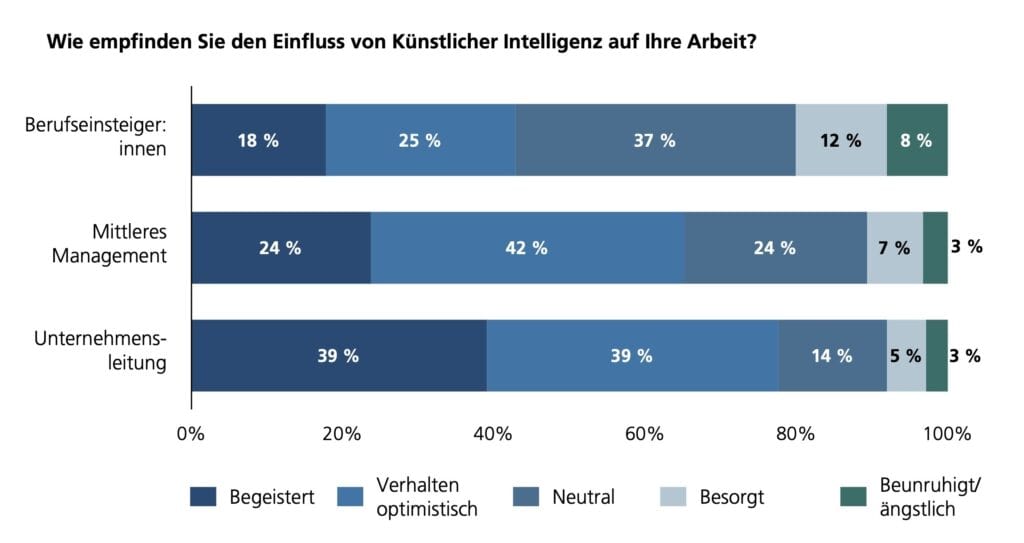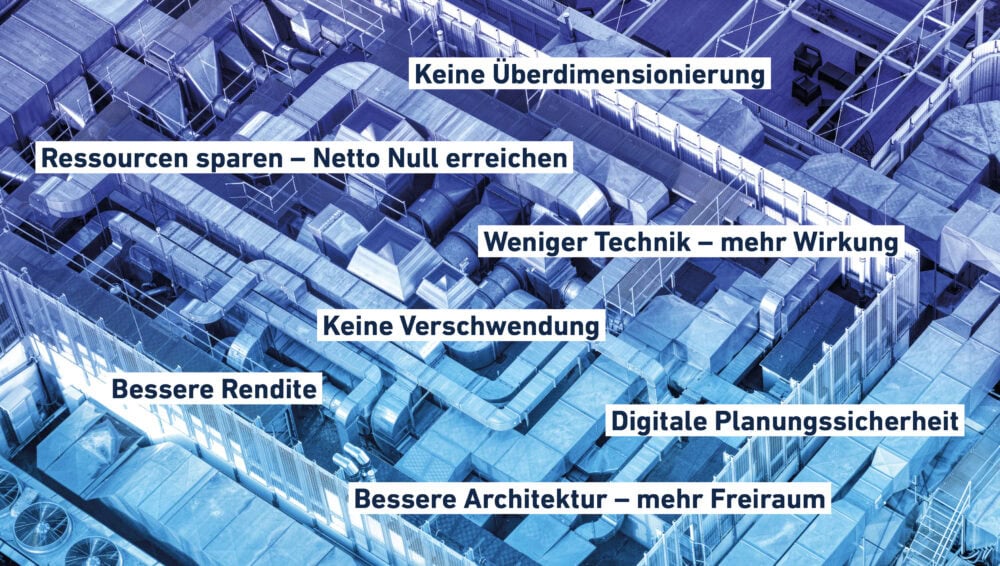Three levers for strong employee performance
When are employees really productive? A new workplace trend report does away with old assumptions and shows that performance comes from a well thought-out environment, suitable tools and clear guidelines.

Presence alone does not make anyone productive - this is shown by the results of the latest workplace trend report from the WORKTECH Academy in collaboration with SPS. The survey reveals that employees are not tied to the location - but to the opportunities to develop their potential. They demand working environments that enable concentration, promote exchange and allow creativity.
Environment as a performance driver
56 % of the employees surveyed worldwide consider their workplace to be conducive to productivity, in Switzerland the figure is 66 %. This puts it ahead of Germany (58 %), the United Kingdom (65 %) and the USA (59 %). This is no coincidence, but the result of targeted design. Focus rooms, retreats, hybrid meeting zones: The more individually the space is tailored to work tasks, the higher the self-perception of one's own performance.

This correlation is particularly clear in certain sectors: In the finance and banking sector, 65 % of respondents report a very supportive working environment. In the technology and software sector, the figure is as high as 67 %. These two sectors also have the largest proportion of employees who perceive an increase in productivity since 2020. Conversely, 62 % of managers are considering leaving their company if the working environment is inefficient.
Technology yes - but the right way
Employees want smooth access to digital tools, support and clearly defined processes. Artificial intelligence (AI) in particular is becoming increasingly popular: more than half of those surveyed use AI tools in their day-to-day work. Senior managers are significantly more open to AI than career starters.

The report also shows that employees with higher productivity use digital tools and AI up to 30 % more often. What is important here is that access must be possible for everyone, not just managers. A lack of training and unclear guidelines lead to frustration and uncertainty - especially among younger employees.
Guidelines determine performance
Autonomy needs orientation. Employees want to know which tools they are allowed to use, how hybrid work is intended and what is expected of them. If these rules are missing, productivity and commitment drop measurably.
Where companies have introduced clear AI guidelines, confidence in technology increases. For example, 53 % of those who are more productive today than five years ago say that their company has a clearly defined and well-communicated AI policy. In contrast, a large proportion (44 %) of those whose productivity has fallen say that there are no guidelines at all.








